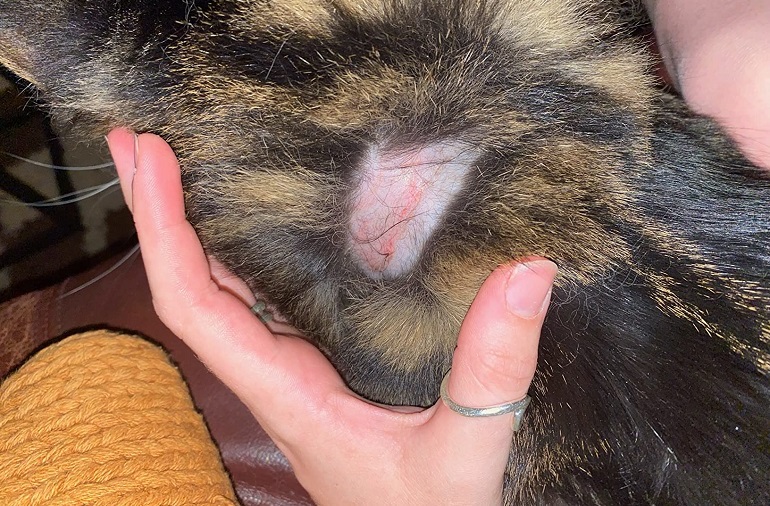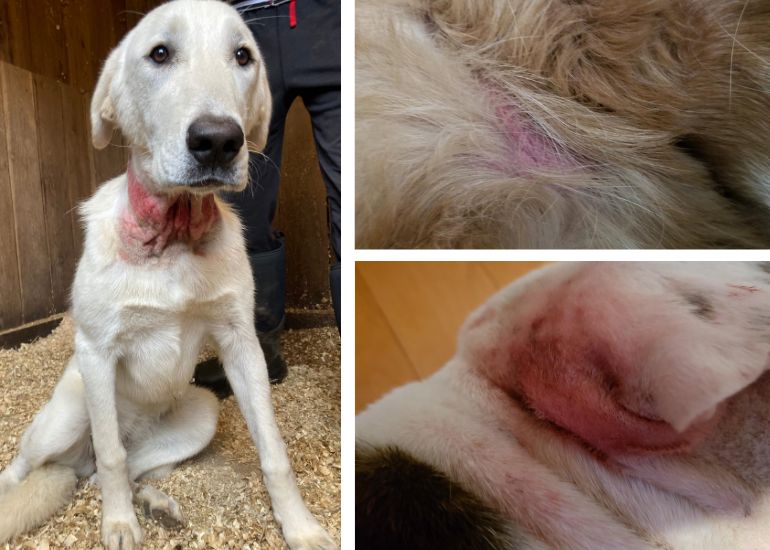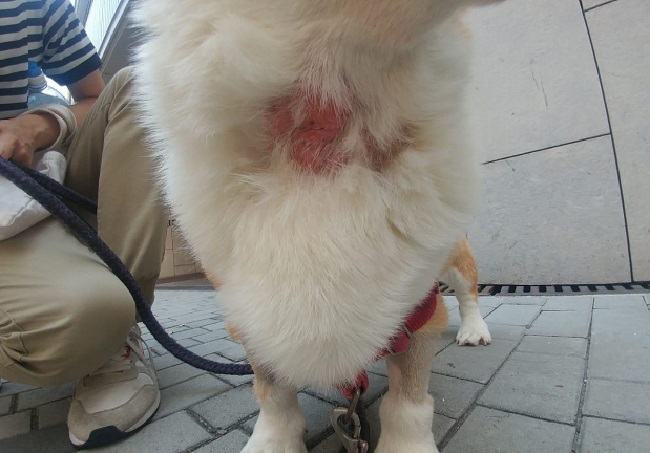Flea collars offer crucial parasite protection, but chemical burns from improper use are a painful reality for some dogs. Witnessing your furry friend suffer from collar-induced irritation is distressing, but quick and appropriate action is vital. This guide provides clear, actionable steps to treat chemical burns from flea collars, prioritizing your dog’s comfort and healing. From identifying the tell-tale signs to administering safe home remedies and knowing when veterinary care is necessary, we equip you with the knowledge to navigate this unfortunate situation and ensure your dog’s swift recovery.
About two weeks ago, I noticed that my puppy was scratching way too abnormally. Yeah, I know that animals scratch themselves sometimes, but I also know the difference between casual scratching and hey, something is irritating me scratching.
On inspecting closely, I nearly gasped to see hundreds of creepy fleas running in his coat. So, the very next moment, I did a quick internet search and ordered the first available flea collar in the hustle.
Shortly, I realized what a fool I was to opt for the very first option. Even though I intended to put my canine back in comfort mode, it was still an unjustifiable mistake!
Just two days after putting the flea collar on, I saw a massive chemical burn around his neck. Not only this, but some area under his lower jaw was also swollen badly, which made me more furious at my negligence.
This is when I learned that flea treatment products can cause skin reactions in sensitive species, ranging from meek tingling sensations known as “epidermal paresthesia” to severe chemical burns.
Thus, this time, I made an appointment with a very qualified veterinarian immediately to prevent further complications. Here I’m going to pen down what my vet suggested so you can conveniently treat your pooch at home!
Signs of a Chemical Burn on Dog
Before moving to treatment methods, let’s have a quick look at the signs of chemical burns so you won’t confuse them with any other injury! Generally, the symptoms of most chemical burns may vary depending upon the nature and type of chemical. However, the most common visible signs are:
- Irritation & swelling (pain & redness in the affected area)
- Black, dead, and bristled skin
- Red eyes
- Coughing
- Abnormal gasping and swallowing
- Peeling off tissues
- Dizziness
- Shock and seizure (weak pulse, cold paws)
- Appetite loss & drooling
- Pain on touching the burned area
- Warm to touch the skin
Treating Chemical Burns on Dogs
Depending upon the level of a chemical burn, you need to opt for a specific treatment plan. Four major levels of chemical burn are as follows;
- 1st degree: Red skin & inflammation
- 2nd degree: Sloughing tissues
- 3rd degree: Loss of dog’s fur in the burned area
- 4th degree: Blackened skin indicating tissue death
How to treat chemical burn from flea collar on dog involves the cleaning or washing of the affected area immediately.
Whatever the level to which your dog’s skin has burned, wash the burn area with cool water immediately to rinse all the harmful chemical traces.
However, even after cleaning the affected area, you need to seek veterinary care immediately for proper decontamination. Here’s what you can do to minimize the damage:
What Can I Put On My Dogs Chemical Burn?
The vet’s advice matters the most regarding what you can and can’t put on your dog’s burn. In case you are not able to obtain veterinary care quickly, here’s what you should do;
Rinse
Clip the hair off the affected area and rinse it with cool water. Get a sterile cloth, dip it into the cold, clean water, and dab gently on the area. However, if the skin is peeling off on dabbing, spraying the cold water is better.
Besides water, you can also use saline solution (a solution of salt and purified water) to decontaminate the area. Avoid touching since doing so will not only be painful for your pet but can also put your health at risk.
Apply Ointment and Dressing
After rinsing the wound, apply silver sulfadiazine ointment to it. To avoid skin contact, wear sterile gloves. This ointment is generally given in all the dog’s first aid kits, or you can source it from any medical store. Otherwise, you can also go with antibiotic ointment.
After this, cover the burn with a sterile dressing to make sure the infection won’t get severe. On your vet’s prescription, you can also give your pup antibiotics to prevent related infections. Don’t forget to keep the wound clean and change the dressing regularly so it can heal more efficiently.
Treatment Options for a Chemical Burn
Some options you can use for burns to be treated immediately are:
- Wash with shampoo/dish soap and water
- Apply baking soda on acidic burns
- Wrap burns with sterile gauze
What Is the Correct Treatment for a Chemical Burn?
The answer to this question depends upon various factors, including the extent of the burn, your dog’s age and health, and the type of chemical. Speaking of the general treatment method vets undergo, then it includes the following steps;
Decontamination/Detoxification
In this step, the toxic chemicals are rinsed off with cold water and other solutions. For example, if the flea repellant had the acidic insecticide, a solution of water and baking soda is used. On the other hand, if the flea collar was alkaline, vinegar and water solution is used.
Medication
To prevent infection from damaging the nervous system and metabolism, intravenous fluid is given to your dog. This fluid keeps your dog hydrated and maintains his blood oxygen level. Besides IV fluids, appropriate medication is also provided to prevent infection, ease pain, and reduce inflammation.
Hospitalization
If the burns are quite severe, then your veterinarian might recommend keeping your dog under observation for several hours. Due to this, he will obtain proper medical attention and suffer less, by having help around 24/7.
How Long Does It Take for a Burn to Heal on a Dog?
Again, it depends upon the level of chemical burn. The first-degree burn takes only a few days to heal. Whereas if burns occur on a deep level, damaging the epidermis and dermis, then it might take several weeks to heal.
Just make sure to avoid moist and warm dressing since it will spread the infection even further. Instead, keep the low-degree burns exposed and cool.
Final Thought
In this blog, I hope you’ve found answers for how to treat chemical burn from flea collar on dog.
Remember that it’s not only a flea collar that can cause painful chemical burns on your pup’s fragile skin. Instead, low-quality collars can also put your dog’s well-being in danger.
That’s why it’s recommended to always opt for high quality dog collars or puppy collars for your canine companions!
Therefore, it’s important to do proper homework because I know from my experience that seeing your pup in pain feels more painful than being one in pain!
Treating a chemical burn from a flea collar requires swift action. Remove the collar immediately and gently wash the affected area with mild soap and cool water. Avoid rubbing, as this can worsen the irritation. Closely monitor your dog for signs of infection or worsening symptoms. If the burn is severe, appears infected, or your dog exhibits discomfort beyond mild irritation, consult a veterinarian immediately. Prevent future burns by exploring alternative flea and tick preventatives and ensuring proper collar fit. Your veterinarian can offer tailored recommendations for your dog’s needs.





